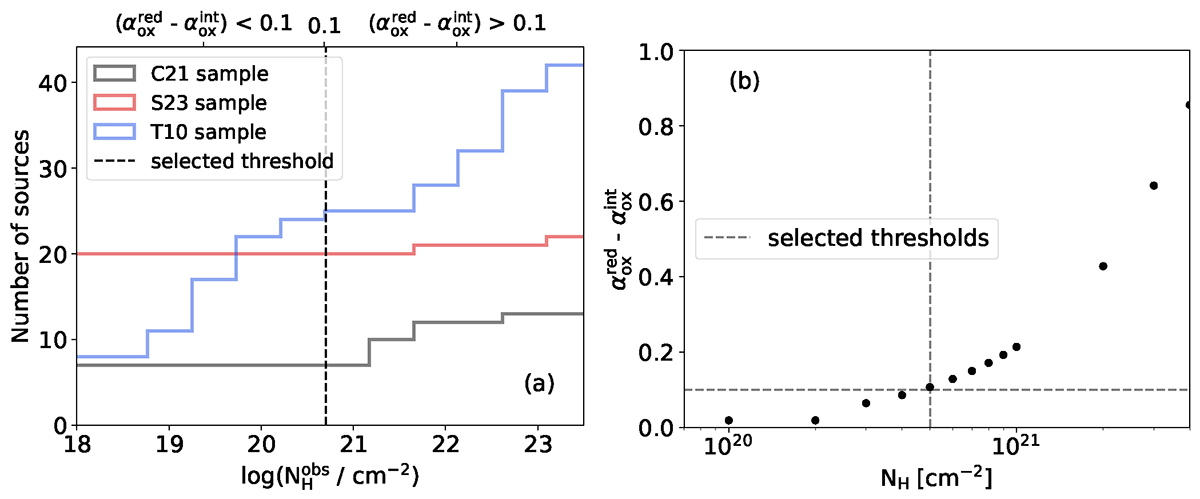Fig. B.1.

Download original image
Unabsorbed sample. As reported in Sect. 3.2, the UV and the X-ray intrinsic luminosities can be affected by the presence of gas and dust along the line of sight. To improve the reliability of our analysis, we thus identify a threshold in the neutral absorber column density (i.e., NH < 5 × 1020 cm−2), which ensures that the AGN observed αox (i.e., potentially affected by absorption and reddening) are closer to their intrinsic values. Panel a: Cumulative curves of the neutral column density observed for the SUBWAYS (in red), T10 (in blue) and C21 (in black) samples. The dashed line indicates the adopted threshold above which the αox is considered significantly affected by absorption and reddening. Panel b: Expected deviation from ![]() = -1.5 as a function of the neutral absorber equivalent hydrogen column density, NH. This plot highlights how absorption and reddening affect the observed αox. The dashed lines highlight the adopted thresholds, which help define a maximum neutral NH and the corresponding expected deviation from the intrinsic αox, above which the observed αox cannot be considered reliable.
= -1.5 as a function of the neutral absorber equivalent hydrogen column density, NH. This plot highlights how absorption and reddening affect the observed αox. The dashed lines highlight the adopted thresholds, which help define a maximum neutral NH and the corresponding expected deviation from the intrinsic αox, above which the observed αox cannot be considered reliable.
Current usage metrics show cumulative count of Article Views (full-text article views including HTML views, PDF and ePub downloads, according to the available data) and Abstracts Views on Vision4Press platform.
Data correspond to usage on the plateform after 2015. The current usage metrics is available 48-96 hours after online publication and is updated daily on week days.
Initial download of the metrics may take a while.


